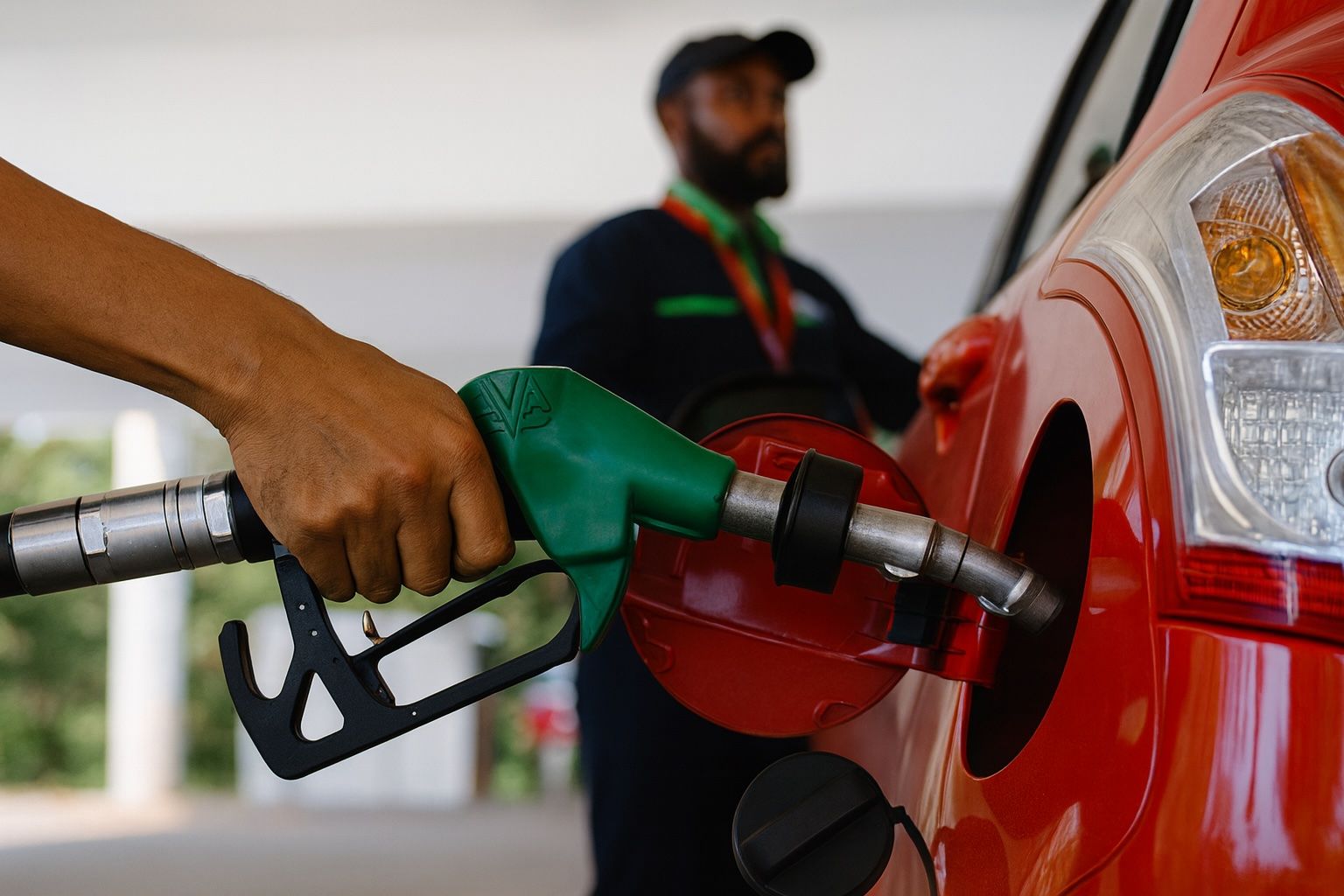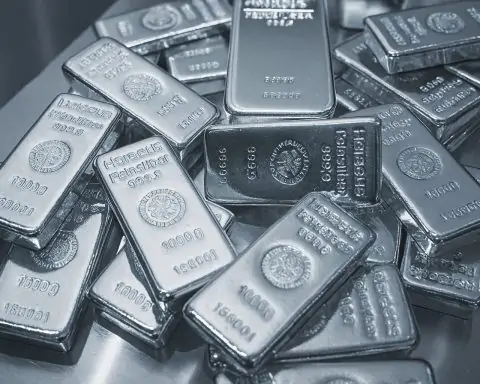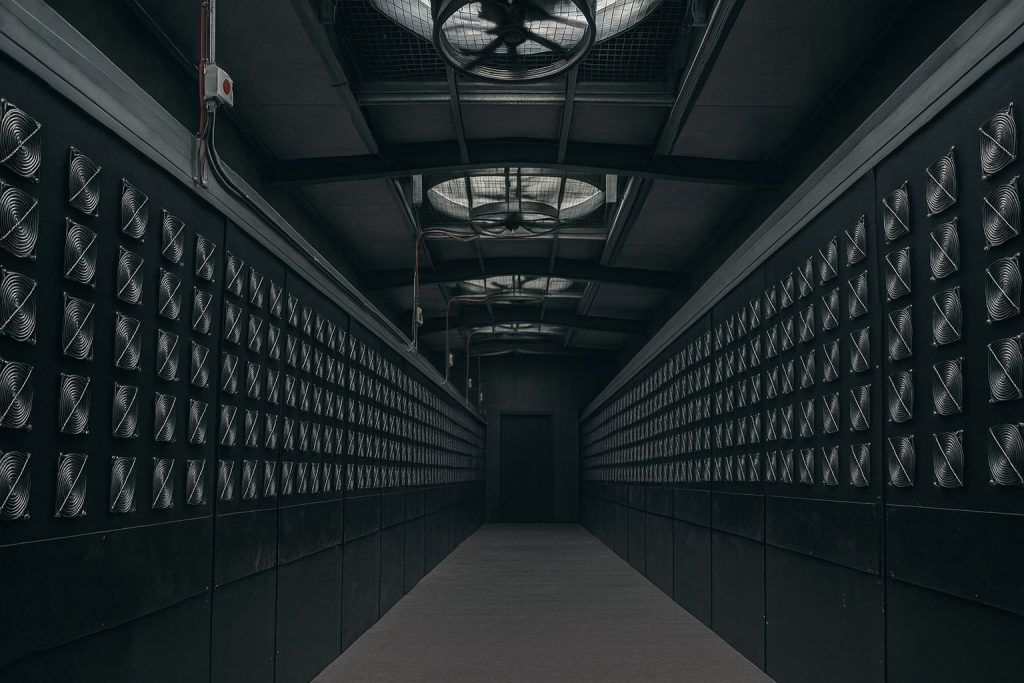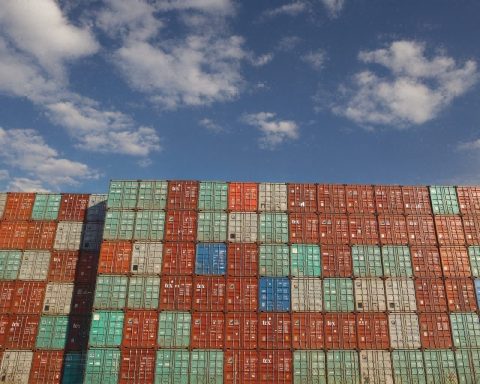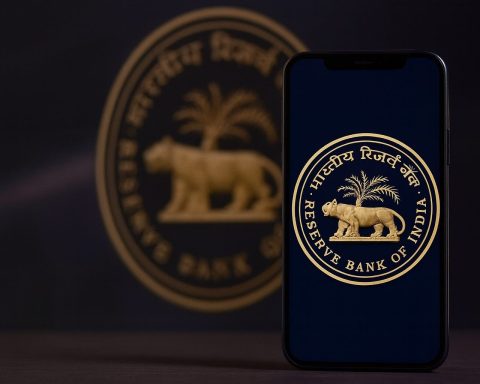- Mixed Fuel Adjustments: South Africa implemented fuel price changes on 1 October 2025 that saw petrol prices inch up (by 1 cent per litre for 93-octane and 8 cents for 95-octane) while diesel prices dipped (by 8 to 10 cents per litre, depending on grade) [1] [2]. This “good news, bad news” scenario means motorists will pay slightly more for petrol but enjoy a modest relief on diesel at the pumps.
- New Pump Prices: After the adjustment, a litre of 95 unleaded petrol now costs around R21.63 in Gauteng (inland) and R20.84 at the coast, while 93 unleaded is about R21.48 inland [3]. Meanwhile, diesel’s wholesale price dropped to roughly R19.39 per litre inland (50ppm grade) and R18.63 at the coast, bringing a bit of respite for transport and logistics operators [4]. (Actual pump prices for diesel may vary since diesel is deregulated.)
- Why the Change?Global oil prices and currency gains drove these adjustments. Brent crude oil averaged ~$67 a barrel in September, slightly up from earlier months amid geopolitical tensions [5]. At the same time, the rand strengthened against the dollar (appreciating from around R17.73/$ to R17.49/$ during the review period) – a key factor that added roughly 14 cents per litre of downward pressure on fuel prices [6]. However, a new 6.1 c/ℓ levy for fuel station worker wage increases was added to petrol prices, offsetting the rand’s benefit and turning a potential petrol price cut into a small hike [7] [8].
- Consumer Impact: The tiny petrol price increase has disappointed South Africans, many of whom are under financial strain. “Consumers had hoped for a decrease to provide some financial relief,” noted Abigail Moyo, spokesperson for labour union UASA [9]. By contrast, the diesel price cut is welcome, especially for industries and farmers, but it’s not large enough to significantly lower transport costs or retail prices in the short term. Nearly all goods in South Africa are transported by diesel-powered trucks, and experts caution that diesel reductions don’t always filter through to cheaper food for consumers [10] [11].
- Economic Context: These October adjustments come on the back of historic stability in 2025’s fuel prices. Thanks to a steadier rand and softer oil markets, petrol and diesel prices are now roughly the same as they were in January 2025 [12]. The small uptick for petrol this month follows a 4c/L petrol price cut in September, while diesel’s drop adds to a much larger 56c–57c/L diesel price reduction last month [13]. Experts warn that consumers remain under pressure – South Africa’s consumer confidence is stuck in negative territory (Index at –13 in Q3) and households are grappling with job losses and high living costs [14] [15]. Even a modest fuel price respite offers only limited relief amid soaring food, electricity, and other costs.
October 2025 Fuel Price Changes: Petrol vs Diesel
South African motorists woke up to mixed fortunes at the fuel pumps in early October 2025. The Department of Mineral Resources and Energy (DMRE) confirmed official fuel price adjustments effective Wednesday, 1 October 2025, and the outcome was a split decision for petrol and diesel users. Petrol prices saw a slight uptick, whereas diesel prices received a small cut [16].
According to the announcement, the price of 93-octane petrol increased by a marginal 1 cent per litre, and 95-octane petrol rose by 8 cents per litre [17]. In contrast, diesel 0.05% (500ppm) fell by 10 cents a litre, and diesel 0.005% (50ppm) dipped by 8 cents per litre [18]. Even illuminating paraffin – used for heating and cooking by many low-income households – dropped by 11 c/ℓ, and LPG cooking gas is a bit cheaper too (down 17 cents per kg) [19]. These changes might seem small in absolute terms, but they mark a notable divergence: petrol is up for the first time in two months, while diesel continues to trend down, offering some relief after a series of high diesel costs earlier in the year.
For consumers, these adjustments translate into new pump prices across the country. As of October 1st, a litre of 95 unleaded petrol costs around R21.63 in Gauteng (the inland highveld region), up from R21.55 in September [20]. Coastal motorists pay about R20.80–R20.84 per litre for 95-octane after the increase [21]. The cheaper 93-octane petrol (available inland) now costs roughly R21.48 per litre [22]. On the diesel side, wholesale prices (before retail mark-ups) have fallen to about R19.34–R19.39 per litre for 0.05% and 0.005% diesel in Gauteng [23]. At the coast, diesel is now around the mid-R18.50s per litre wholesale [24]. While diesel’s price is quoted at wholesale level, many sectors stand to benefit – from truckers hauling goods on long routes, to farmers and manufacturers who rely on diesel for machinery.
Motorists had been bracing for these changes, as the Central Energy Fund’s late-September projections hinted at a similar outcome. Initial data earlier in September suggested a much steeper petrol hike (around +25c) and a big diesel drop (around –17c) was on the cards, but the situation improved by month-end [25] [26]. By the time of the official update, petrol’s increase had been whittled down to just a few cents, and diesel’s decrease, though smaller than early forecasts, remained in place [27] [28]. In the words of one industry observer, “after the last few months of rising diesel prices, [diesel users will] take what they can get” [29]. For petrol users, however, the outcome is a mild setback – a far cry from the substantial price cuts many had hoped for, given the economic hardships facing consumers.
Why Did Petrol Go Up While Diesel Came Down?
This unusual split in price direction – petrol creeping upward as diesel gets cheaper – can be explained by the complex formula that South Africa uses to calculate fuel prices. Two main forces drive local fuel prices: international oil prices and the rand–US dollar exchange rate [30]. In the September review period (which determines October’s prices), those forces were pushing in opposite directions for much of the month:
- Global oil prices: The price of Brent crude oil hovered around the mid-$60s per barrel in September, trading in a relatively tight range near $67 and even spiking briefly to about $69 in the final week [31] [32]. Higher oil prices tend to raise the cost of refined petrol and diesel that South Africa imports. Indeed, international petroleum product prices tracked the crude uptick, contributing to a potential increase of roughly 16.9 c/ℓ in petrol and 8.1 c/ℓ in diesel during the month [33] [34]. Geopolitical factors kept oil elevated – the ongoing Russia–Ukraine conflict and tensions in the Middle East have injected risk into markets, nudging oil prices upward [35]. Normally, this would spell across-the-board fuel price hikes.
- Exchange rate (Rand vs Dollar): Fortunately for South Africans, the rand strengthened notably against the US dollar over the same period. The currency averaged about R17.49 per $1, up from R17.73 in the previous month [36]. Toward late September the rand even hit around R17.30/$, a one-year high, thanks in part to significant investor inflows into local bonds [37]. A stronger rand makes it cheaper to buy oil and refined fuel in dollar terms. The DMRE reports this currency gain shaved off around 14–15 cents per litre from what the price would otherwise have been [38]. As a result, the upward pressure from oil was largely offset by the rand’s strength. In fact, by month-end fuel price calculations swung from an “under-recovery” (suggesting a hike) to a slight “over-recovery” (suggesting a cut) – especially for diesel [39] [40].
However, one extra “X-factor” tipped the scales for petrol: increased wages at fuel stations. October’s price adjustment included a government-approved 6.1 cents per litre addition to the petrol price to fund wage increases for forecourt attendants and other petrol station workers [41] [42]. This nominal few cents, agreed to under a Motor Industry Bargaining Council settlement, was implemented nationwide from 1 October 2025 [43]. That extra 6.1c levy effectively erased what would have been a small petrol price decrease. The DMRE acknowledged that factoring in the wage hike “pushed prices back into the red for petrol”, turning a potential cut into the slight increase drivers are now seeing [44]. Diesel prices were not affected by this levy in the same way (diesel is largely deregulated at the retail level and sold wholesale without full-service costs), so diesel enjoyed the full benefit of the rand’s strength – hence a modest drop in price.
In summary, petrol prices rose in October primarily because of this added labor cost component, on top of oil price pressures, whereas diesel prices fell thanks to the stronger rand outweighing oil’s rise. A DMRE spokesperson, Robert Maake, explained that multiple variables were at play: international product prices, the rand exchange rate, and even a periodic adjustment in the 95 vs 93 octane pricing differential (done every quarter) influenced the final figures [45] [46]. Maake noted that global factors like the Russia–Ukraine war and Middle East unrest have been pushing oil prices up, but that was counterbalanced by the rand’s appreciation and OPEC+’s decision to boost output from October (which could increase supply and eventually ease prices) [47]. In the end, petrol landed slightly on the “plus” side and diesel on the “minus” side, a outcome the department described as a mix of small hikes and cuts rather than any dramatic swing [48] [49].
Impact on Motorists and Businesses
For the average South African driver, fuel prices remain a pain point, even with these relatively small adjustments. The 1c–8c per litre increase in petrol may sound negligible, but it comes at a time when household budgets are stretched thin. South Africans are already contending with higher prices on food, electricity, and other essentials, so any rise in fuel – however small – feels like “the last thing that is needed,” as consumer debt expert Neil Roets put it [50]. “People have come to the end of their rope and expecting them to deal with … consistently high petrol prices is unrealistic,” Roets warned, adding that “another petrol price hike is the last thing” struggling families can bear right now [51]. His stark words underline the reality that even minor increases can hurt when drivers are living paycheck to paycheck. Filling a 50-litre tank with 95-octane petrol in Gauteng now costs around R1,081, which is only a few rands more than last month – but for many, those rands matter.
Consumer groups and labor organizations echoed similar sentiments. Abigail Moyo of UASA highlighted widespread disappointment that petrol didn’t come down: “Consumers had hoped for a decrease to provide some financial relief,” Moyo said [52]. That hope was not unfounded – September and August both saw small petrol price cuts, and many motorists were banking on a third consecutive month of relief. Instead, October’s slight uptick, though far from a massive spike, dashes those expectations and leaves petrol prices roughly back to July levels. With the cost of living climbing and the year’s final quarter bringing expenses like school holidays and festive season travel, any increase in fuel costs squeezes disposable income further. It also has a psychological impact: South Africa’s consumer confidence index slid to –13 in the third quarter of 2025, indicative of pessimism among households about their financial prospects [53]. Mamello Matikinca-Ngwenya, chief economist at FNB, noted that shaky confidence tends to curb spending: “This declining confidence is likely to result in slower household expenditure growth, a clear indication that many families are on unstable financial ground.” [54] In other words, people are cutting back, and a petrol price hike – even a tiny one – is salt in the wound for beleaguered consumers.
On the business and industry side, the diesel price cut offers a glimmer of relief. Diesel is the lifeblood of commerce – virtually all goods in South Africa are transported by road at some stage, and trucks, buses, agricultural machinery, and generators predominantly run on diesel fuel [55] [56]. A 8–10c per litre drop in diesel will slightly reduce operating costs for logistics companies, public transport fleets, farmers, and manufacturers. For example, over a month of constant operation, a trucking firm that burns tens of thousands of litres will save a few thousand rand due to this decrease – savings that are certainly welcome amid high input costs. Economist and consumer advocates, however, caution against over-optimism: historically, small dips in diesel prices haven’t guaranteed lower prices for consumers on store shelves. “Diesel reductions always bring hope that transport costs will filter down to food prices, but sadly history has shown this rarely happens in practice. Consumers remain trapped by escalating food costs, even when input costs ease,” Neil Roets (Debt Rescue CEO) observed in a recent analysis [57]. In short, while wholesale diesel is a bit cheaper, South Africans shouldn’t expect groceries to suddenly get cheaper in October. Retailers and supply chains often absorb such fluctuations or adjust only after sustained fuel price changes.
Nonetheless, any diesel price relief is significant for inflation. South Africa’s inflation had been relatively moderate (3.5% in July 2025, up from 3.0% in June) [58], but food prices were still rising over 5% annually, partly fueled by past fuel cost increases. If diesel prices continue to ease in coming months, it could help temper distribution costs and keep a lid on food inflation going forward. Importantly, lower diesel costs also benefit public transport and taxis (many minibuses use diesel), potentially staving off fare increases. Agricultural producers, heading into the summer planting season, will also take any diesel price cut they can get for their tractors and irrigation pumps. One month’s modest decrease won’t on its own reverse the “cost-of-living crisis” that commentators describe, but it’s a step in a favorable direction for the sectors that keep the economy running.
Trends and Outlook: A Year of Relative Stability, But Challenges Loom
Stepping back, 2025 so far has been a year of remarkable fuel price stability for South Africa. Despite some ups and downs each month, petrol and diesel in October are nearly the same price as they were at the start of the year [59]. This is quite a contrast to the volatility seen in recent years. A combination of factors made this possible: a relatively strong and steady rand, and international oil prices that, while not low in absolute terms, have avoided extreme spikes. As energy journalist Jason Woosey noted, a stable currency and historically lower oil prices “ensured a degree of fuel price stability in 2025” [60]. In fact, petrol and diesel prices now are roughly where they stood in January 2025 [61] – a relief for consumers who remember when petrol cost well over R25 per litre during the peak of 2022’s oil crisis.
That said, within 2025 there have been fluctuations: the second quarter brought some increases, but by August and September, prices were retreating again. September’s hefty 56c/L cut to diesel and 4c/L cut to petrol provided a nice breather [62], and October’s changes have been, as Woosey put it, the “second month of moderate” adjustments [63]. Barring the new wage levy on petrol, the underlying fuel price changes have been almost flat. This suggests a kind of equilibrium had been reached in late winter/early spring – oil prices in the $60s and a rand in the high teens resulted in only minor tweaks at the pump.
Looking ahead, will this stability continue? Analysts are cautiously optimistic but warn that global and local risks remain. The October price calculation period showed how geopolitical events (like conflicts and global supply decisions) can quickly alter the trajectory for oil. A flare-up in geopolitical tensions or surprise moves by oil producers could send crude prices climbing, which would eventually feed into higher fuel costs for South Africa. Conversely, if the global economy slows and oil demand drops, or if rand gains strength further (perhaps on the back of improved investor sentiment or higher interest rates attracting capital), fuel prices could even fall in coming months. South Africa’s Central Energy Fund (CEF) will be monitoring daily data for hints of November’s adjustment – any sustained rand strength or retreat in oil prices by mid-October would translate to predictions of another cut, whereas a weaker rand or costlier oil would foreshadow a hike. It’s a delicate balance.
Domestic factors will also play a role. The new forecourt wage levy is now built into the petrol price baseline; unless there are further changes to wages or taxes, that particular factor won’t cause further jumps going forward (it’s a one-time inclusion, not recurring). Fuel taxes and levies themselves remain a significant chunk of every litre – about R6.21 is taxed per litre in South Africa [64] – and were unchanged in the latest budget, giving some policy stability on that front. With no additional tax hikes expected until at least next year’s budget, any fuel price movement will hinge purely on market factors (oil and currency).
For now, South Africans can take a bit of solace in the fact that diesel is slightly cheaper, petrol only slightly pricier, and that we are not seeing the kind of wild swings that defined some previous years. Motorists and businesses should still budget carefully, as fuel remains north of R20/L, which is a high level historically (fuel was under R15/L just a few years ago). The Automobile Association (AA) and other commentators advise road users to practice fuel-saving measures where possible – for instance, carpooling, maintaining steady speeds, and keeping vehicles well-serviced – to mitigate the impact of persistently high fuel costs on their wallets.
In conclusion, the October 2025 fuel price update is a story of marginal ups and downs: a little bit of pain for petrol buyers, a little gain for diesel users. It reflects broader economic currents – a tug-of-war between global oil pressures and local currency strength – and underscores the tough financial reality for South Africans. As the festive season approaches, all eyes will be on whether the trend continues into November and December. Will the rand keep shielding us from oil shocks, and might we finally see a true petrol price cut to bring relief? Or will global forces deliver an unwelcome surprise? For now, at least, diesel drivers can breathe a small sigh of relief, even if petrol remains a pocket-pincher [65] [66]. South Africans are no strangers to fuel price rollercoasters, and this month’s ride has been gentler than most – but everyone will be hoping for a smoother road ahead in the journey toward year-end.
Sources: Department of Mineral Resources and Energy official announcement (via BusinessTech, The Citizen, The South African) [67] [68]; expert commentary from IOL and Business Report [69] [70]; BusinessLive and other local news analyses [71] [72].
References
1. businesstech.co.za, 2. www.citizen.co.za, 3. iol.co.za, 4. iol.co.za, 5. www.citizen.co.za, 6. iol.co.za, 7. businesstech.co.za, 8. www.businesslive.co.za, 9. iol.co.za, 10. iol.co.za, 11. iol.co.za, 12. iol.co.za, 13. iol.co.za, 14. iol.co.za, 15. iol.co.za, 16. businesstech.co.za, 17. businesstech.co.za, 18. businesstech.co.za, 19. businesstech.co.za, 20. businesstech.co.za, 21. iol.co.za, 22. www.citizen.co.za, 23. www.citizen.co.za, 24. businesstech.co.za, 25. stuff.co.za, 26. stuff.co.za, 27. stuff.co.za, 28. stuff.co.za, 29. stuff.co.za, 30. www.thesouthafrican.com, 31. businesstech.co.za, 32. www.thesouthafrican.com, 33. businesstech.co.za, 34. businesstech.co.za, 35. www.citizen.co.za, 36. iol.co.za, 37. iol.co.za, 38. www.citizen.co.za, 39. businesstech.co.za, 40. www.thesouthafrican.com, 41. businesstech.co.za, 42. www.businesslive.co.za, 43. businesstech.co.za, 44. businesstech.co.za, 45. www.citizen.co.za, 46. businesstech.co.za, 47. www.citizen.co.za, 48. www.thesouthafrican.com, 49. www.thesouthafrican.com, 50. iol.co.za, 51. iol.co.za, 52. iol.co.za, 53. iol.co.za, 54. iol.co.za, 55. iol.co.za, 56. iol.co.za, 57. iol.co.za, 58. iol.co.za, 59. iol.co.za, 60. iol.co.za, 61. iol.co.za, 62. iol.co.za, 63. iol.co.za, 64. iol.co.za, 65. iol.co.za, 66. iol.co.za, 67. businesstech.co.za, 68. www.citizen.co.za, 69. iol.co.za, 70. iol.co.za, 71. www.businesslive.co.za, 72. iol.co.za
